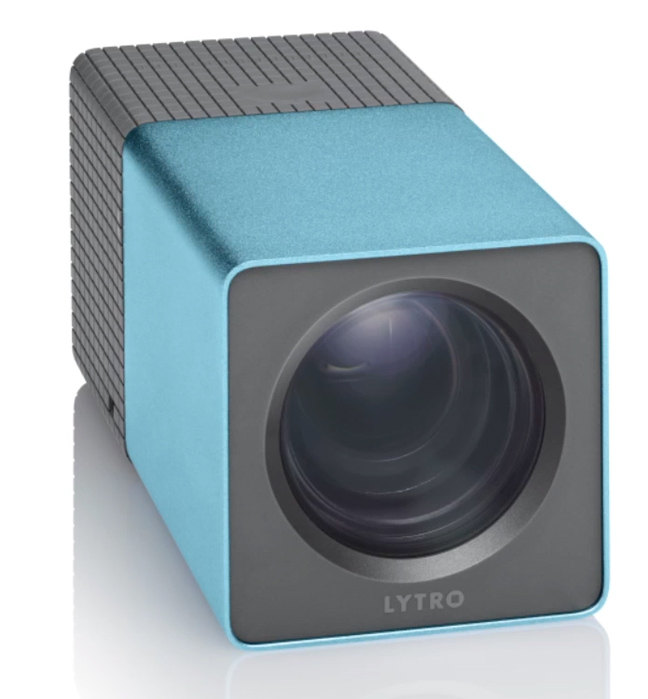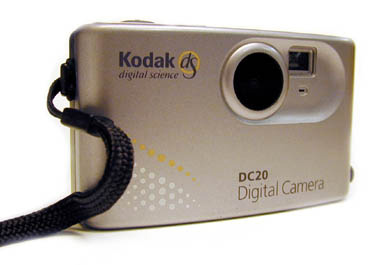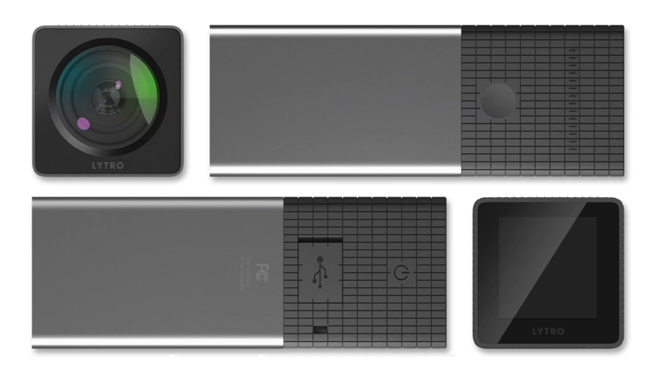
I bought a Lytro camera today. The device is due to ship in February or March next year, and I am looking forward to getting mine. I ordered the blue one:
“My” blue Lytro camera. I will be waiting by the mailbox until March to receive it. The camera takes photos by recording light waves, and processes them into photos after the fact. The images it creates can be focused or refocused anytime with special software. Photo courtesy of Lytro.
This won’t be the first new camera technology I have bought. I once bought a digital camera from Eastman Kodak Company, at about the same price. It took 12 photos in a sealed case (no removable memory) it used a serial cable, and each image was 640 x 480 pixels in size. That camera, called the DC20, was cute, and it introduced me to digital photography.
I am gambling on the Lytro camera being the beginning of something exciting. It is the first commercial manifestation of a plenoptic camera, one which captures light rays rather than images.
The idea is that you can take a photo and focus it later. The camera will capture 11 million “light rays” which capture the way that light comes into the camera. After taking the photo, it will be able to be processed using a Macintosh (only) application that can convert the light rays into an image. After the image is made it can be refocused again and again dynamically.
You can try Lytro images online at Lytro.com. They are very different, and very exciting.
The camera is the invention of a graduate student named Ren Ng, who made a working model of the camera in 2004 while a researcher at Stanford. His thesis on the topic explains how the camera works, and how the processing is done “in post.” A simplified diagram of the operation of the camera is shown below.
This illustration of the concept of the Lytro camera is taken from a drawing by Ren Ng, in a Stanford University Computer Science Tech Report (CSTR 2005-02, April, 2005, Image copyright Ren Ng, 2004-2005). Mr. Ng and his colleagues inserted a microlens array in front of the sensor in a digital camera. The sensor collects all of the light in all of its angles as collected on the sensor. Algorithms process the information after exposure to define focus.
After completing his work at Stanford, Ng and several of his colleagues started Lytro, they got some venture capital to develop the invention, and now they are – almost – ready to ship.
The new Lytro is being marketed heavily to the younger generation, with cool, hip people shown in the publicity, taking photos of each other in social scenes. The photos are then uploaded to a web site where they can be shared with the entire community, and everyone can focus on his own favorite spot in the scene. The photos will be quite popular on Facebook, I am sure.
My Kodak DC20 camera. It was the first digital camera I owned, and I credit it with giving me the bug. It had the capacity to record 12 photos of 640 x 480 resolution. It had no removable memory, so the photos had to be downloaded with a serial cable.
I bought the Kodak DC20 camera in about 1994, and I sold it a few years later on eBay (I probably should have kept it as a memento). With 17 years’ experience in digital photography I am now capable of making photos that are better than anything I did with film, and am able to leap tall buildings in a single bound.
Now imagine a camera that doesn’t need to be focused when the photo is taken, one which has a f2.0 aperture, making it capable of capturing images in very low light, and one which produces photos that can be modified after exposure. Now imagine that technology 17 years hence. Will Canon, Nikon, and others offer silent, mirrorless SLR cameras that can capture light rays?
The Lytro cameras feature beautiful industrial design. On the back is a small touch screen, which allows the photographer to touch the screen where she wants the camera to focus. The camera has a zoom lens, and a fast f2.0 maximum aperture. Once the images are captured, they can be viewed on the camera, or transferred to a Macintosh computer over USB, then converted with the Lytro Light Field Engine, a program that converts the light-wave image into a useful photograph. Photo courtesy of Lytro.
I would like that, because often enough I take a photo with my $7,000 Canon camera, and it chooses to focus on something in the background when I think it should be focusing on something in the foreground. I can blame only myself for this, as focus is my responsibility. But, just imagine being able to change the focus of an image in Adobe Photoshop (they have announced this as a possible feature in a future version of the software), or in the Lytro camera software.
I like Lytro’s kind of imagination, and I am happy to invest in it.
I’m writing a new book on printing processes and file preparation. To get more information, and to be included in my announcement of its publication, please give me your e-mail address by clicking below.





